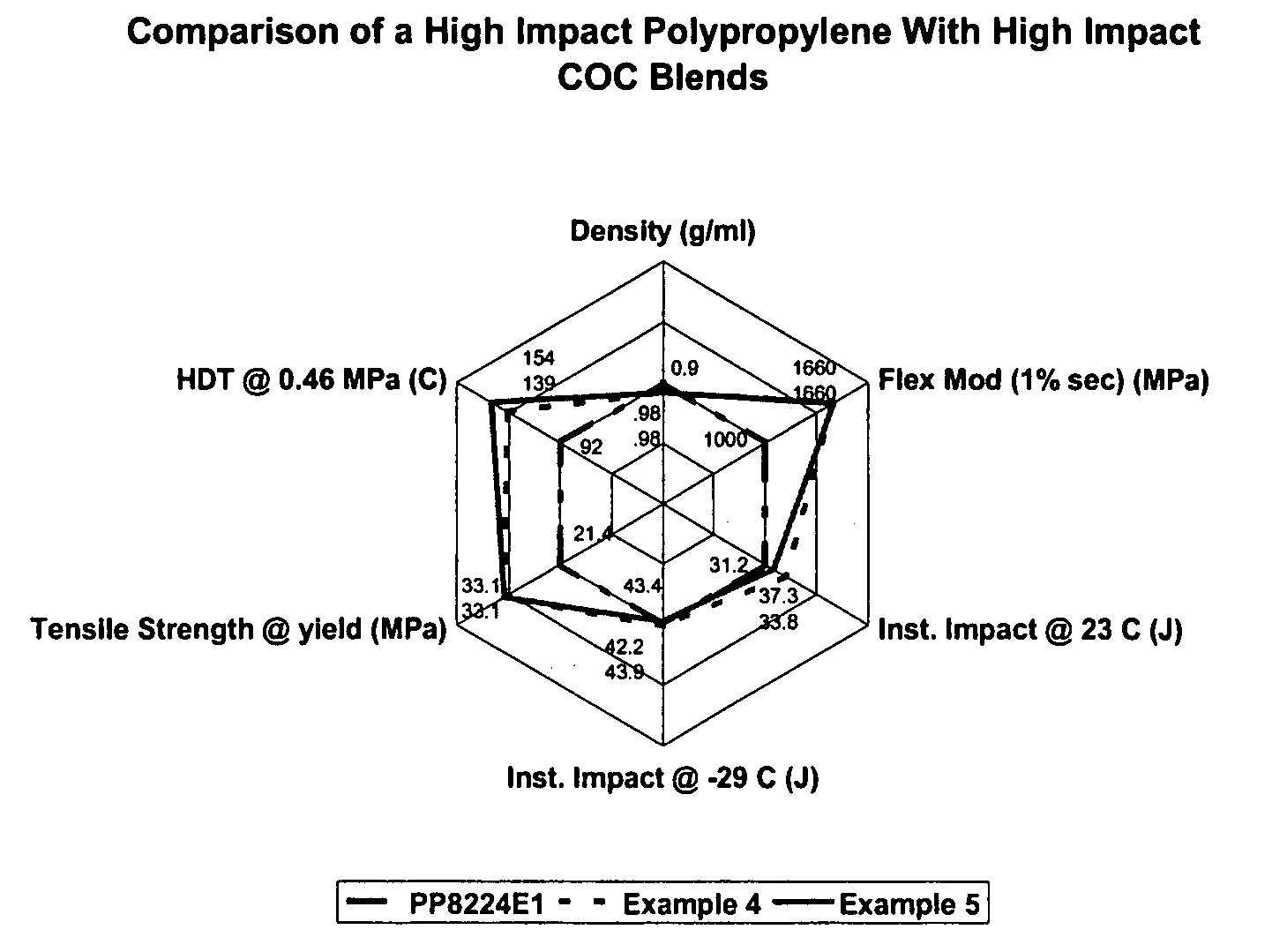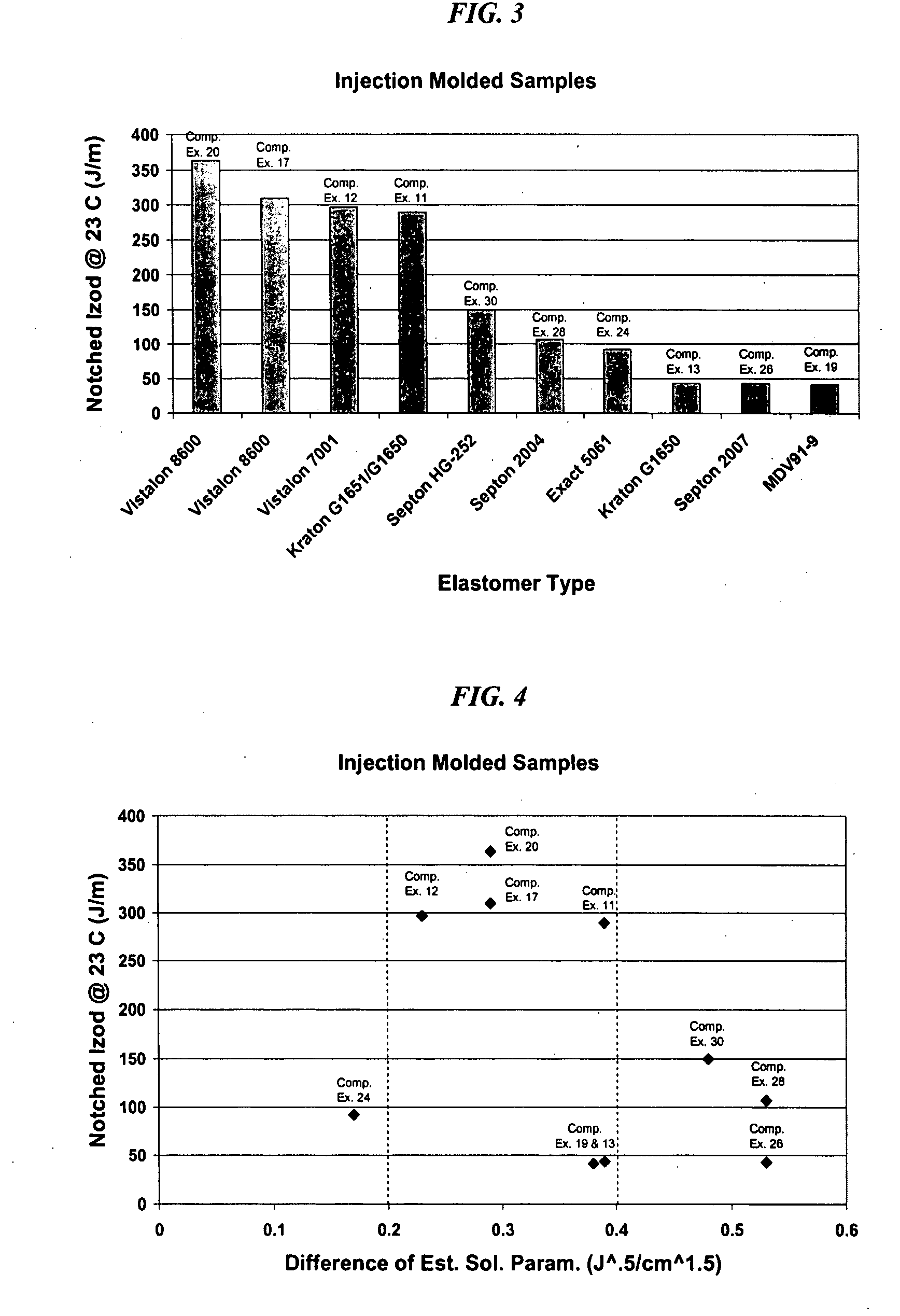Polymer compositions comprising cyclic olefin copolymers and polyolefin modifiers
a technology of cyclic olefin and polyolefin, which is applied in the field of polymer compositions comprising cyclic olefin copolymers and polyolefin modifiers, can solve the problems of glass transition temperature and high stiffness, poor impact properties, and brittleness for many applications
- Summary
- Abstract
- Description
- Claims
- Application Information
AI Technical Summary
Benefits of technology
Problems solved by technology
Method used
Image
Examples
examples
[0140]The invention will now be more particularly described with reference to the following non-limiting Examples.
[0141]The following materials were used in Examples:
MaterialSourcePropertiesVistalon 8600ExxonMobilBimodal EPDM rubber containing 57 wt %Chemical Companyethylene, 8.9 wt. % ethylidene norbornene, 34.1wt. % propylene. Tg is −45.15° C. and rubber hasno other feature (no softening point) in its DSCtrace run at 10° C. / min.Vistalon 9500ExxonMobilBimodal EPDM rubber containing 60 wt. %Chemical Companyethylene, 11 wt. % ethylidene norbornene, 29wt. % propylene. Tg is −41.64° C. and rubber hasno other feature (no softening point) in its DSCtrace run at 10° C. / min.Vistalon 7001ExxonMobilMetallocene based bimodal EPDM containingChemical Company73 wt. % ethylene, 5 wt. % ethylidenenorbornene, 22 wt. % propylene. Tg is −39.13° C.and rubber has a melting peak at 45° C. in itsDSC trace.Exxelor PO 1020ExxonMobilHomopolymer of PP grafted with 0.5-1.0 wt. %Chemical Companymaleic anhydrid...
PUM
| Property | Measurement | Unit |
|---|---|---|
| glass transition temperature | aaaaa | aaaaa |
| glass transition temperature | aaaaa | aaaaa |
| solubility parameter | aaaaa | aaaaa |
Abstract
Description
Claims
Application Information
 Login to View More
Login to View More - R&D
- Intellectual Property
- Life Sciences
- Materials
- Tech Scout
- Unparalleled Data Quality
- Higher Quality Content
- 60% Fewer Hallucinations
Browse by: Latest US Patents, China's latest patents, Technical Efficacy Thesaurus, Application Domain, Technology Topic, Popular Technical Reports.
© 2025 PatSnap. All rights reserved.Legal|Privacy policy|Modern Slavery Act Transparency Statement|Sitemap|About US| Contact US: help@patsnap.com



